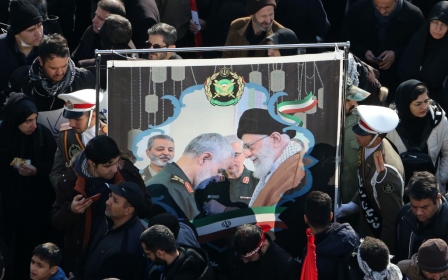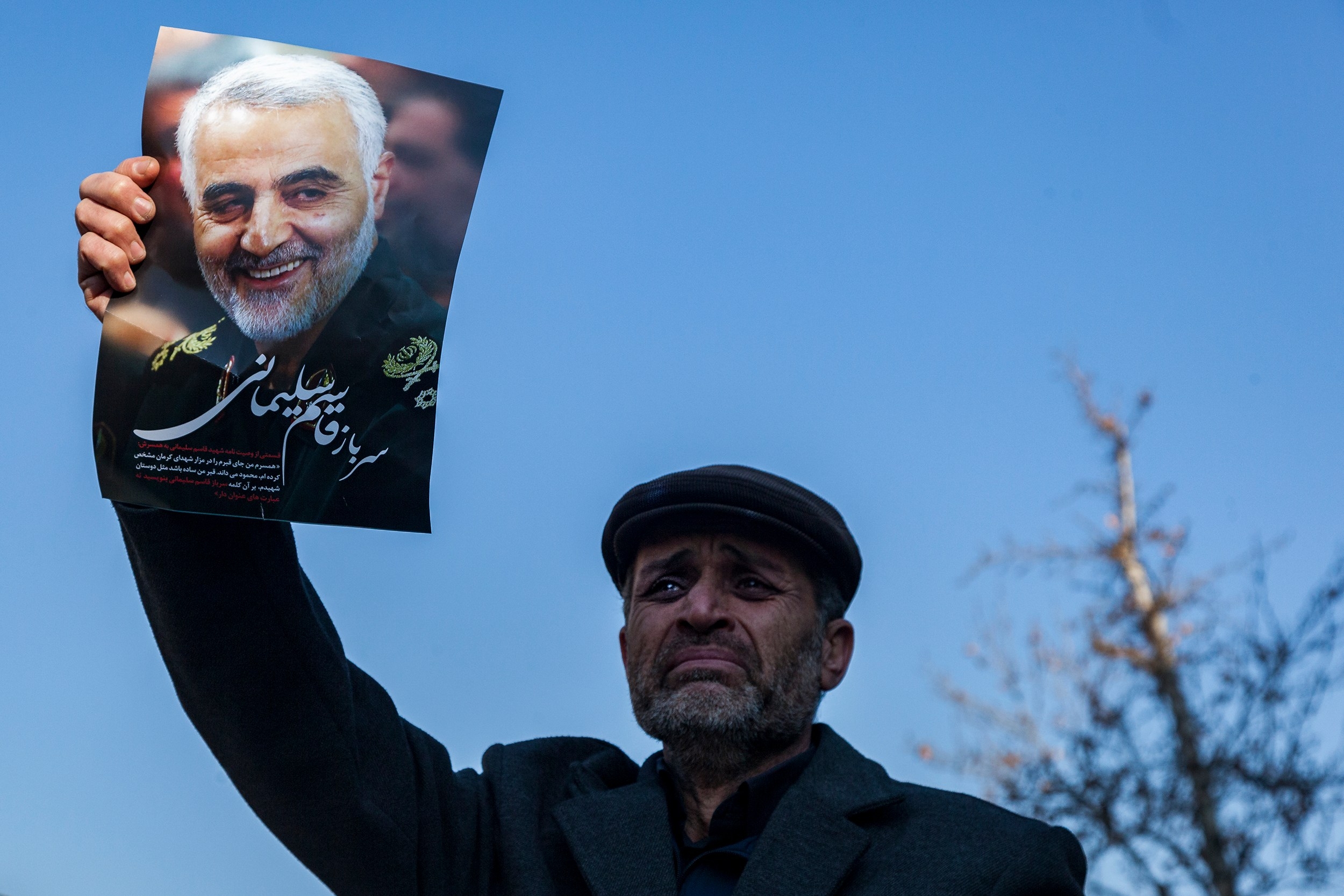
In pictures: How Iranians mourn Qassem Soleimani

The assassination of Qassem Soleimani, one of the top commanders of Iran's Islamic Revolutionary Guard Corps, on 3 January by US forces brought tensions between Washington and Tehran close to a breaking point. While the possibility of all-out war between the two countries seems, at least temporarily, to have been ruled out, Soleimani's death came as a shock to many Iranians.
Images of the Quds Force commander have since appeared across the Iranian capital, whether on billboards, walls or shop windows. Near a bank in central Tehran, a banner refers to Soleimani as "Sayyed Ali's Zolfaghr" - in reference to the sword of Imam Ali, the foundational figure of Shia Islam. (MEE/ Mehri Jamshidi)
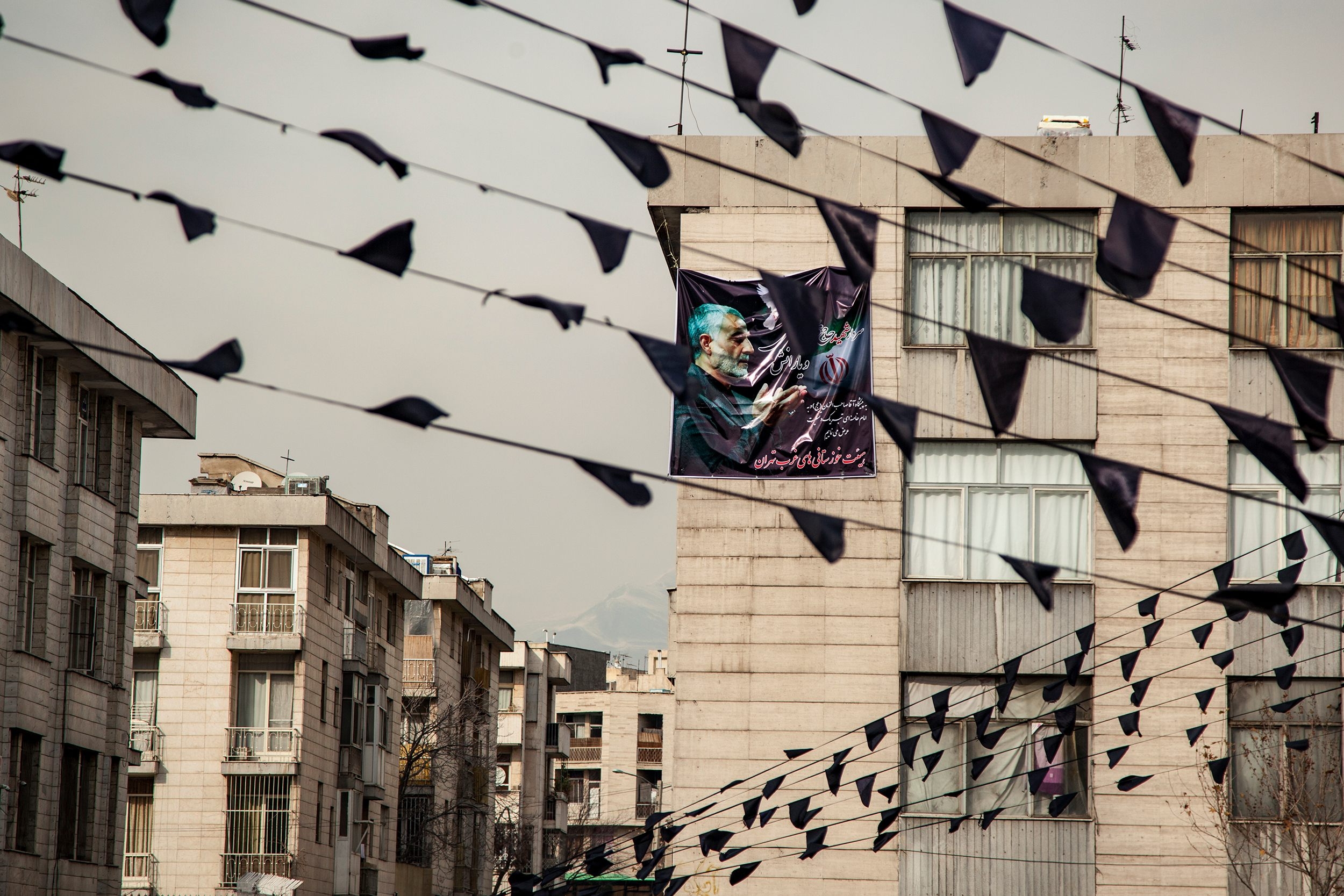
Black flags of mourning flutter in the wind in the streets of Tehran on 10 January in front of a banner for Soleimani hung by Tehran residents.
Since Soleimani’s death, a number of mourning areas have been set up by the Basij paramilitary group across Tehran, serving tea and playing noha - a genre of mourning music usually played during the holiday of Ashura to mark the death of Imam Hussein, the third Imam in Shia Islam. (MEE/ Mehri Jamshidi)

On 5 January, tens of thousands of Iranians took to the streets across the country to pay homage to Soleimani. In Tehran, the procession of mourners blocked the capital’s main artery, Kargar Street, cutting off traffic in the city.
Soleimani’s funeral procession in his hometown of Kerman on 7 January was also marked by large crowds, leading to a deadly crush and the commander’s burial being postponed. (MEE/ Mehri Jamshidi)

Graffiti depicting Soleimani now adorn the walls of downtown Tehran. Depictions of Iranians killed in conflict, referred to as martyrs, are a common sight in Iran, particularly since the 1979 Islamic revolution, when the concept of martyrdom was widely promoted across society by the new establishment.
Soleimani now joins the already extensive pantheon - as one newly installed billboard elsewhere in Tehran proclaimed: “Martyrdom was the reward for his unending efforts over the years.” (MEE/ Mehri Jamshidi)
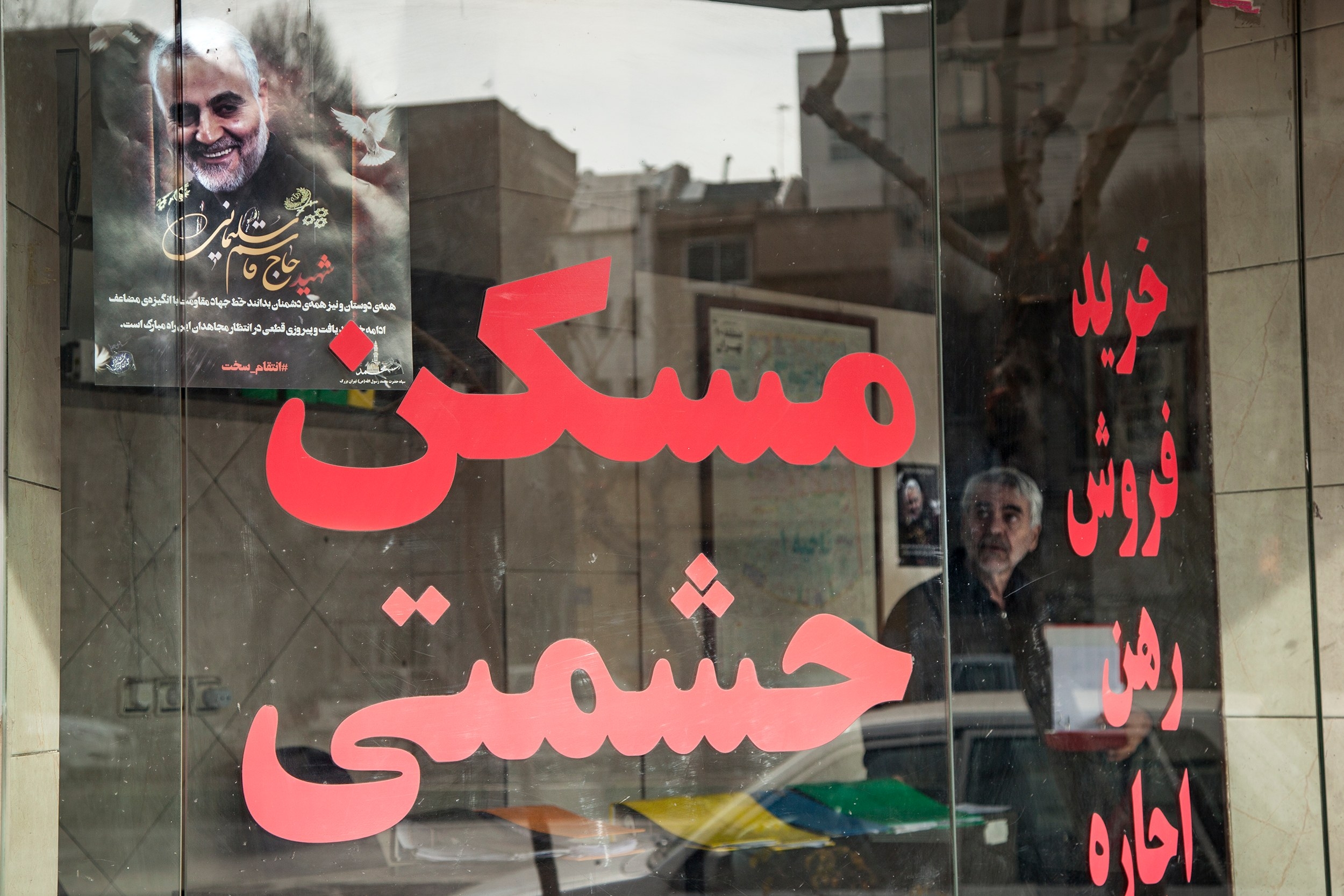
Abdullah Hemmati, right, is a 63-year-old retired school teacher who now works for a small real estate agency in Tehran. When he learned of Soleimani’s assassination, he says he prayed for the slain commander’s bravery and loyalty, as well as for Iran to be kept safe.
“He was nothing less than Amir Kabir,” Hemmati told Middle East Eye, referring to a prominent Persian political figure from the 19th century. “History will remember who he was.” (MEE/ Mehri Jamshidi)
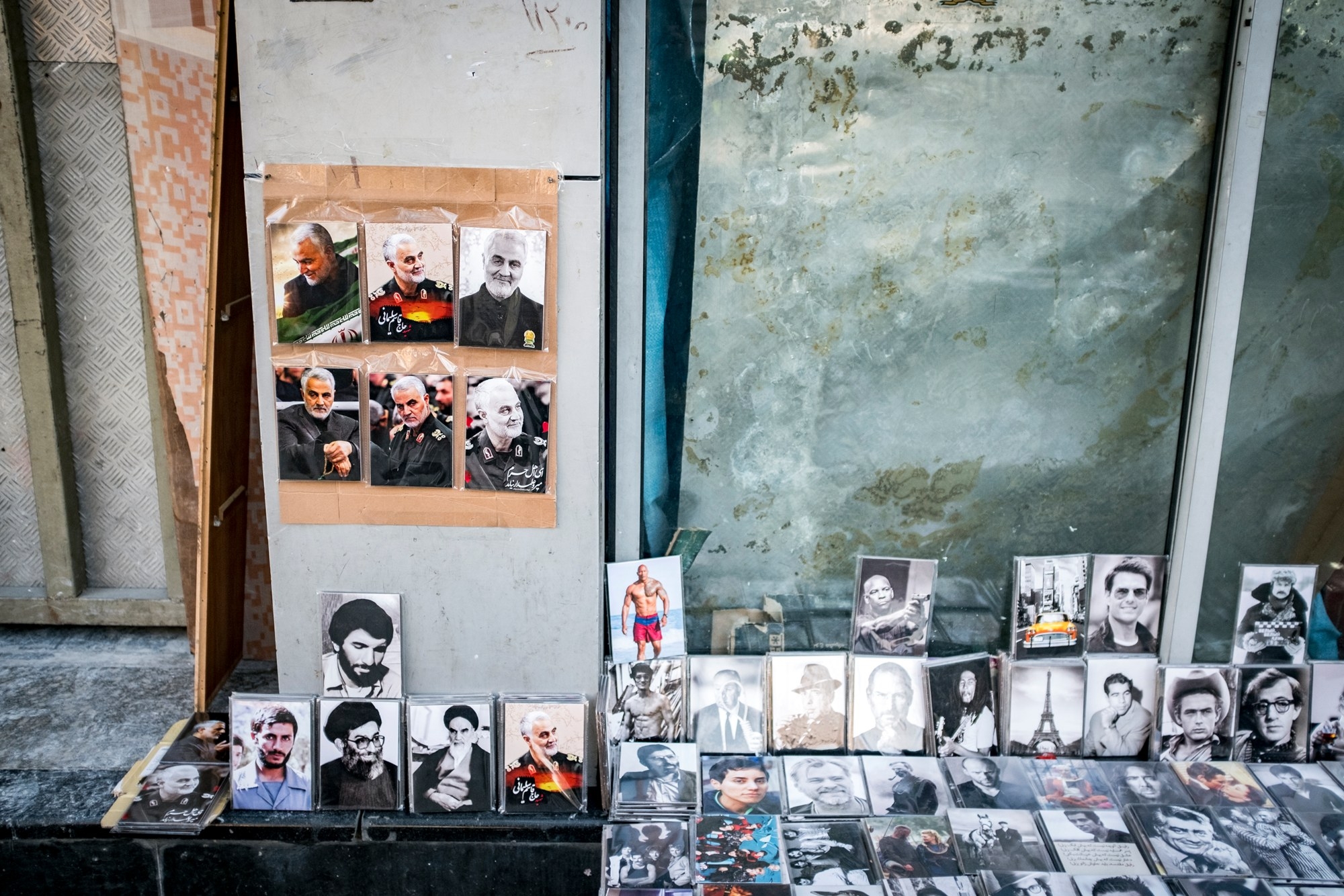
Street vendors in the Iranian capital are already selling postcards of Soleimani, alongside other famous Iranian and international figures. Meanwhile, plenty of small businesses have hung up banners featuring Soleimani, like Mr. Ghalevand, the owner of a chador shop.
For him, “Hajj Qassem” as he is affectionately known in Iran “was not just an Islamic figure, he was a national hero”. His death, Ghalevand says, has united Iranians irrespective of their views. “People with different opinions came to his funeral,” he told MEE. (MEE/ Mehri Jamshidi)
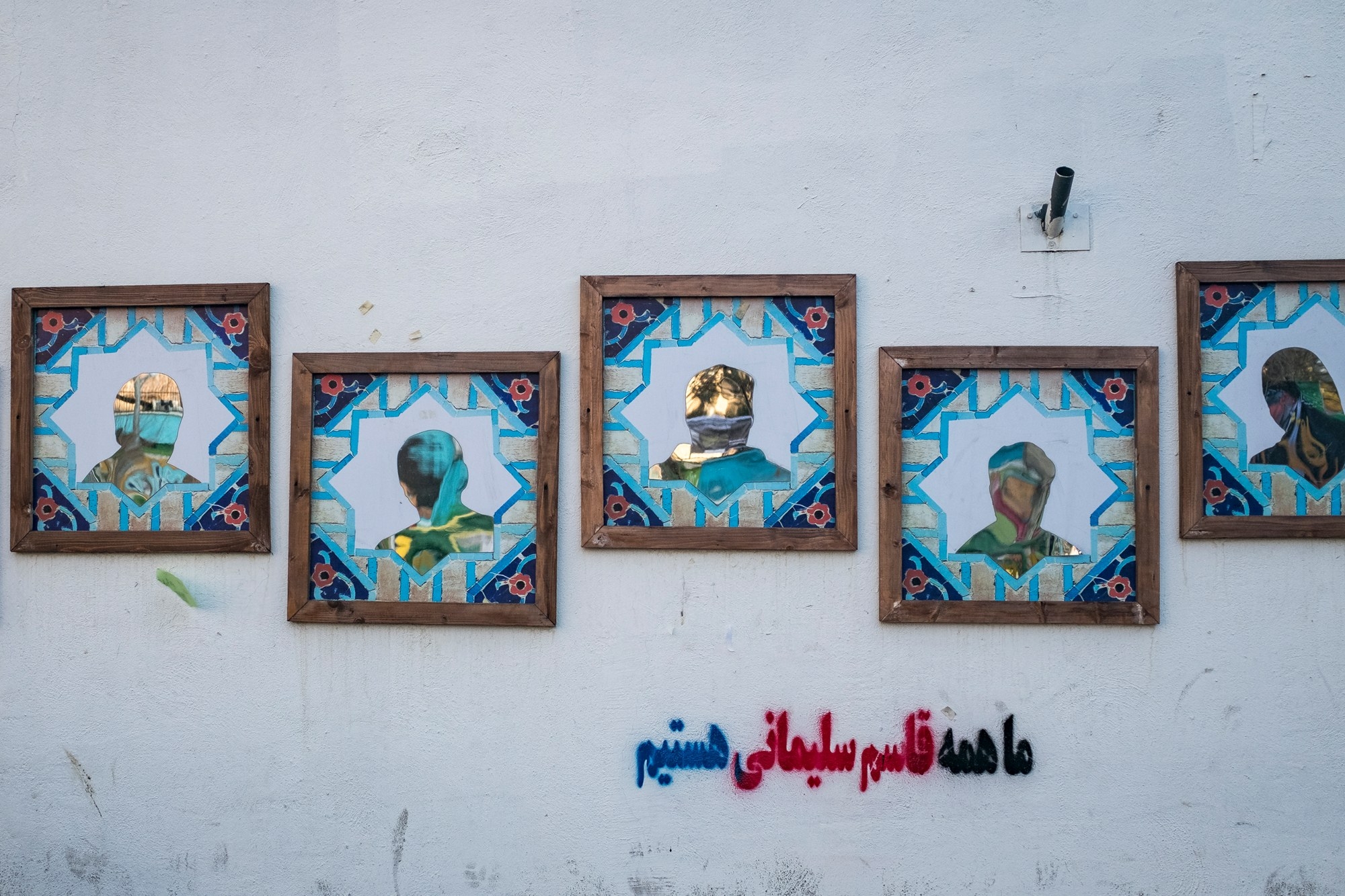
Mirrors decorate the walls Enqelab Street near the University of Tehran. Now, they are accompanied by graffiti stating: “We are all Qassem Soleimani.”
While Iranians have come together in opposition to the belligerent policies of US President Donald Trump, the predominant mood in the country seems to be worry over how the situation will continue to develop. (MEE/ Mehri Jamshidi)
Middle East Eye propose une couverture et une analyse indépendantes et incomparables du Moyen-Orient, de l’Afrique du Nord et d’autres régions du monde. Pour en savoir plus sur la reprise de ce contenu et les frais qui s’appliquent, veuillez remplir ce formulaire [en anglais]. Pour en savoir plus sur MEE, cliquez ici [en anglais].




